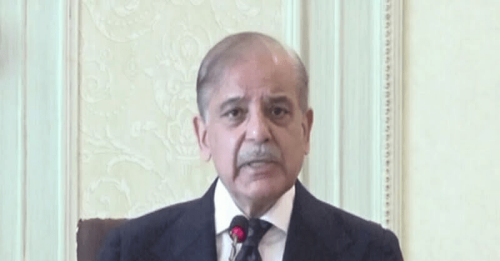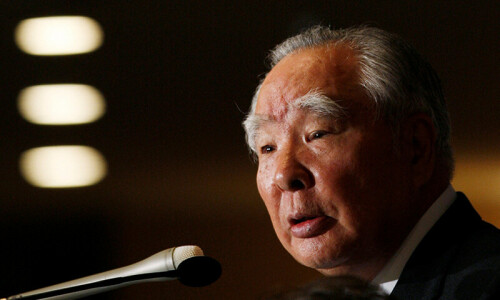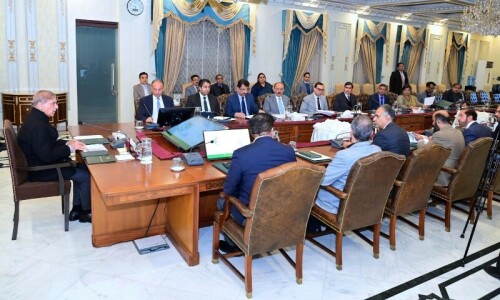BELATEDLY, let’s get to this spy business. It seemed to be about India, but then the timing suggested Iran too.
It wasn’t just the timing either: word has got around that the spy had been in custody for a while — connect those dots the only way you can.
Now, an Afghan spy was picked up and the news splashed in the media through the usual suspects. So, what the hell is going on?
Straight up, let’s dispense with the silliness. What we’re being told isn’t why it’s being done — so let’s cut to the why.
The last time Pakistan was being overrun by spies, it was the Americans. Five years ago, it was safe houses in Islamabad and mysterious rented bungalows in Lahore.
Thousands of unexplained visas were issued by the unpatriotic Zardari and the scheming Haqqani.
A crescendo was reached with Raymond Davis, the OBL raid and Shakil Afridi. Then, mysteriously, it all went away.
Pakistan stopped issuing visas to spies, apparently.
But we have a sense of what really happened because the Americans subsequently hinted at it. The Americans had decided Pakistan was a problem and the quantum of resources dedicated to it was stepped up.
Inside Pakistan, that was interpreted as interest in our nukes, the Punjab jihadis and stuff that aligned with Afghan and Indian interests.
So, fear and uncertainty triggered a familiar response: domestic opinion was activated as a buffer against American demands.
If the state alone couldn’t resist or thwart what the Americans were up to, the street and the state together would. As ever, the rabble of right-wingers and loons was happy to oblige.
The idea that we can win over the world, or some parts of the world, by dredging up external interference is pabulum.
Now, we have a new round with new actors — but a different intended audience.
The idea that we can win over the world, or some parts of the world, by dredging up external interference is pabulum.
Pakistan is the place that the world fears external influence from — in Afghanistan, in India and via jihadis all over the place.
The best we can hope for on the external front is a bit of counterweight to the Afghan stuff — having acknowledged the Taliban are here and under our influence, the foreign-spies-in-Pakistan line helps balance the ledgers.
So why pretend? The audience is internal. It’s you and me, Pakistan and Pakistanis. The boys are talking to us.
The message is simple: we’re fighting to save Pakistan, but this fight will be complex and long.
The intended effect is also straightforward enough: Pakistan, we’re on your side and we need you on ours.
The pay-off, especially down the road, is manifold and more complicated.
Start with the message. When Raheel gave us Zarb-i-Azb, circumstances left him with a dilemma.
The boys had long argued that they needed a political and national consensus if North Waziristan, the last tribal militant bastion, was to fall.
But when Raheel was ready to move, neither consensus existed. So he had to manufacture them. That meant selling Zarb-i-Azb as decisive, historic and all-encompassing.
With NWA falling — and attendant counter-terrorism stuff in the cities — Pakistan would be safe.
It wasn’t quite the truth, but when consensus has to be manufactured you can be elastic with the truth.
But that creates its own problems. If Zarb-i-Azb was going to save Pakistan, then what do you do when Pakistan doesn’t get saved?
What, bluntly, do you do when stuff still occasionally goes boom and people die?
APS was close enough to the original decision to allow it to boost the consensus — nobody thought Pakistan would be saved in six months.
But Lahore, and other inevitable stuff down the road, is now sufficiently removed to start creating doubt.
What’s going on? Will we ever be safe? Do the boys know what they’re doing?
Trotting out the spy connection helps fight those doubts and recalibrates expectations.
It signals to the people that great games are afoot. The boys are doing everything they can, but the enemy is shadowy and his links many. That calls for patience.
Roping India, Afghanistan and Iran into the narrative on terrorism casts the fight against militancy into a historical, decades-long perspective. The people will understand the need for patience.
And, with India, Iran and Afghanistan in the mix, the people will know — there’s only one group who can lead this fight, the boys themselves.
The brilliance of the spy connection is that it does several things masterfully at the same time. It buys time, deflects blame and makes the boys more indispensable than ever.
It also — if the civilians were smart enough to catch on — menaces the civilians.
When it was the Americans who were unleashing their spies on us, it was Zardari and Haqqani who felt the heat.
But back then the memory of Musharraf was fresh, Kayani had grabbed a second term and the fight against militancy had stalled.
Now, we’ve got a war that’s much more advanced, with few frontiers left to conquer and a civilian resisting encroachment in Punjab.
Meanwhile, there on the other side is a chief for the ages leading the patriots fighting to keep us safe.
Nawaz should do the maths on the story that is being told to us: long war, foreign connection, a war only patriots can lead and win.
The maths leads to an obvious conclusion — get some buy-in on the terrorism fight in Punjab and start to look like a fighting patriot.
Else, with the spy connection unleashed and fighting patriots needed to lead, there’s just you-know-who left looking like a winner.
The writer is a member of staff.
Twitter: @cyalm
Published in Dawn, April 10th, 2016












































